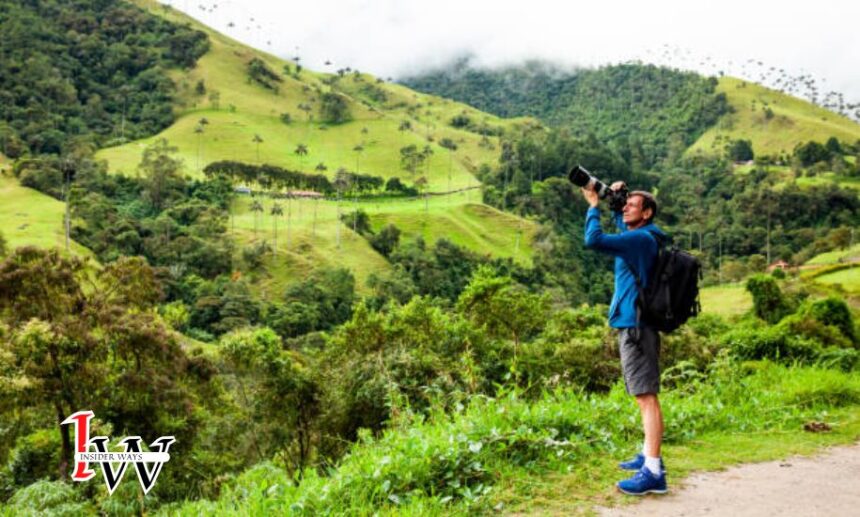Introduction to Karingkarla: More Than a Cultural Artifact
“Karingkarla” holds profound significance within various Indigenous communities, symbolizing a deep connection to the land, ancestors, and a rich tradition of ecological and spiritual wisdom. This article, brought to you by Insider Ways, delves into the multi-faceted aspects of Karingkarla, exploring its cultural, spiritual, and ecological importance and its role in contemporary society.
The Roots of Karingkarla: Tradition and Spirituality
At its core, Karingkarla embodies the spiritual and cultural practices of Indigenous peoples, particularly noted among the Yolngu of Northern Australia. The term encapsulates the intricate relationship between these communities and their natural environments, expressed through ceremonies that include song, dance, and storytelling. These practices are not just rituals; they serve as vital educational tools that pass on essential ecological knowledge and moral values from one generation to the next.
Karingkarla in Practice: Ceremonies and Rituals
Karingkarla ceremonies are rich with expressions of gratitude and reverence for nature’s bounty. Traditional instruments like clapsticks and didgeridoos accompany dances and songs, creating a harmonious atmosphere that connects participants with their ancestors and the spiritual world. These rituals reinforce community bonds and individual identities within the tribe, fostering a shared stewardship over their ancestral lands.
Ecological Wisdom of Karingkarla: Living in Harmony with Nature
One of the most distinctive features of Karingkarla is its integration of ecological knowledge. This wisdom is deeply embedded in the traditions, guiding the community in sustainable living and the management of natural resources. The ceremonies and stories of Karingkarla teach about seasonal cycles, the behaviors of flora and fauna, and the ecological impacts of human activity, ensuring that this critical knowledge persists through ages.
Modern Celebrations of Karingkarla: Adaptation and Resilience
In modern times, Karingkarla has adapted to incorporate contemporary elements while retaining its traditional essence. Indigenous communities celebrate Karingkarla through art exhibitions, public performances, and educational workshops, which highlight the cultural richness and ecological teachings of these traditions. These events not only preserve the practices but also introduce them to broader audiences, enhancing intercultural understanding and respect.
Challenges and Preservation Efforts: Securing Karingkarla’s Future
Despite its cultural significance, Karingkarla faces challenges such as environmental degradation and cultural assimilation, which threaten the continuity of these traditions. Indigenous groups, cultural organizations, and academic institutions collaborate to document these practices and educate both Indigenous and non-Indigenous people about their importance. Preserving the languages and stories associated with Karingkarla is crucial for maintaining the identity and resilience of these communities.
Global Impact and Recognition: Promoting Cultural Diversity
As awareness of Indigenous cultures grows worldwide, Karingkarla plays a crucial role in fostering cross-cultural dialogue and understanding. Its promotion not only highlights the unique heritage of the Yolngu people but also underscores the universal values of respect for nature and community unity. Initiatives that showcase Karingkarla on global platforms, such as international festivals and educational programs, contribute to a broader appreciation of Indigenous wisdom and traditions.
The Role of Karingkarla in Environmental Advocacy
In recent years, Karingkarla has also emerged as a powerful tool in environmental advocacy. By highlighting traditional ecological knowledge through Karingkarla practices, Indigenous leaders have drawn attention to critical environmental issues such as climate change and biodiversity loss. This integration of traditional wisdom with modern environmental challenges has paved the way for innovative solutions that respect both cultural and ecological systems.
Intergenerational Transmission of Knowledge
The transmission of Karingkarla across generations is essential for its preservation. Elders play a pivotal role in teaching younger generations about the significance of Karingkarla, not only through formal ceremonies but also through informal storytelling and everyday practices. This intergenerational knowledge transfer ensures that Karingkarla remains a living tradition, adapting to contemporary contexts while preserving its core values.
Cultural Exchange and Collaboration
Cultural exchange programs and collaborations between Indigenous and non-Indigenous communities have also contributed to the vitality of Karingkarla. These exchanges provide platforms for sharing knowledge and experiences, fostering mutual respect and understanding. Through such collaborations, Karingkarla has gained recognition beyond its traditional contexts, enriching the global cultural landscape and promoting intercultural solidarity.
Future Prospects: Preserving Karingkarla for Generations to Come
Looking ahead, the preservation of Karingkarla faces ongoing challenges but also opportunities for innovation and adaptation. Collaborative efforts between Indigenous communities, governmental bodies, and cultural institutions are essential for documenting, revitalizing, and safeguarding Karingkarla. By integrating digital technologies and modern educational strategies, these efforts ensure that Karingkarla continues to thrive as a living heritage, enriching both Indigenous communities and global audiences alike.
Conclusion
As we reflect on the significance of Karingkarla, it becomes clear that it is more than just a cultural tradition; it is a vital link to the past and a beacon for the future. By embracing and promoting Karingkarla, we acknowledge the importance of cultural diversity, ecological stewardship, and the enduring strength of Indigenous traditions. Through Insider Ways, we aim to contribute to the global recognition of such invaluable cultural heritages, fostering a more inclusive and understanding world.
Karingkarla, with its deep roots and contemporary branches, continues to teach us about resilience, unity, and the importance of living in harmony with our surroundings. It serves as a testament to the wisdom of the ancestors and offers guidance for future generations to navigate the challenges of a changing world.
Frequently Asked Questions (FAQs) About Karingkarla
What is Karingkarla?
Karingkarla is a significant cultural and spiritual tradition among the Yolngu people of Northern Australia, encompassing ceremonies, rituals, and ecological wisdom.
How is Karingkarla practiced?
Karingkarla is practiced through ceremonies involving song, dance, and storytelling, often accompanied by traditional instruments like clapsticks and didgeridoos.
What role does Karingkarla play in Indigenous culture?
Karingkarla plays a crucial role in preserving Indigenous cultural heritage, teaching ecological knowledge, and reinforcing community bonds.
How has Karingkarla adapted to modern times?
Karingkarla has adapted by incorporating contemporary elements into its celebrations, such as art exhibitions and educational workshops, while retaining its traditional essence.
What challenges does Karingkarla face today?
Karingkarla faces challenges like environmental degradation and cultural assimilation, which threaten the continuity of its practices and knowledge.
How is Karingkarla being preserved?
Efforts to preserve Karingkarla include documentation by cultural organizations, educational initiatives, and collaborative projects between Indigenous and non-Indigenous communities.



